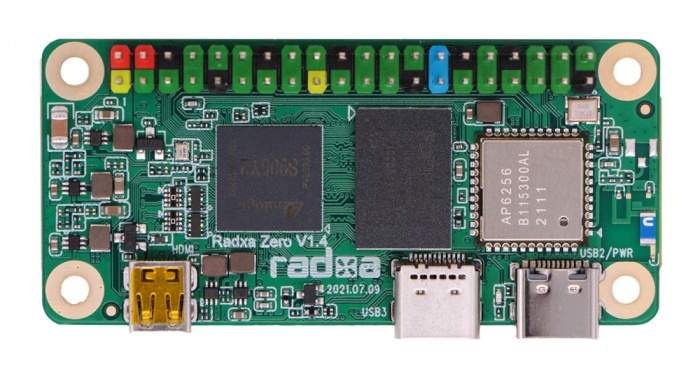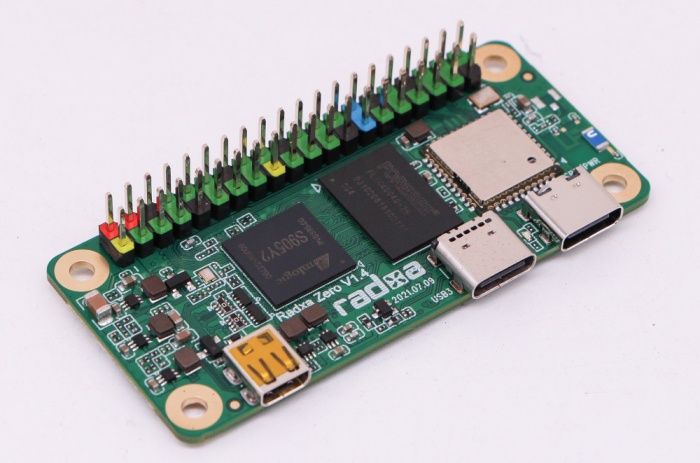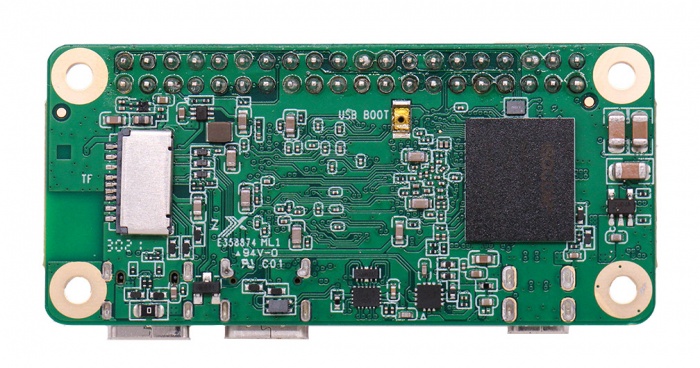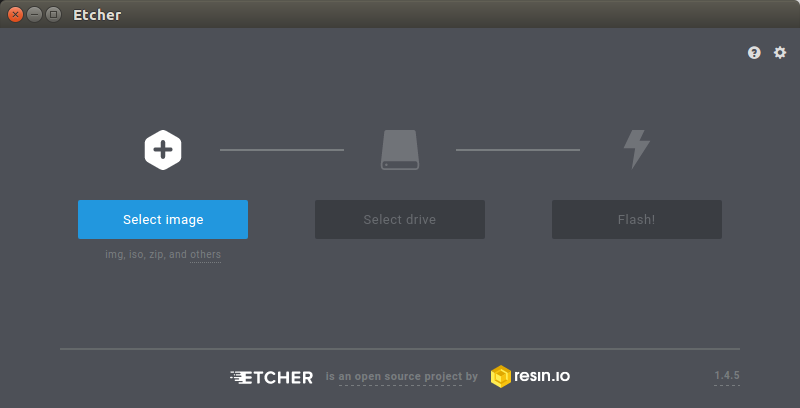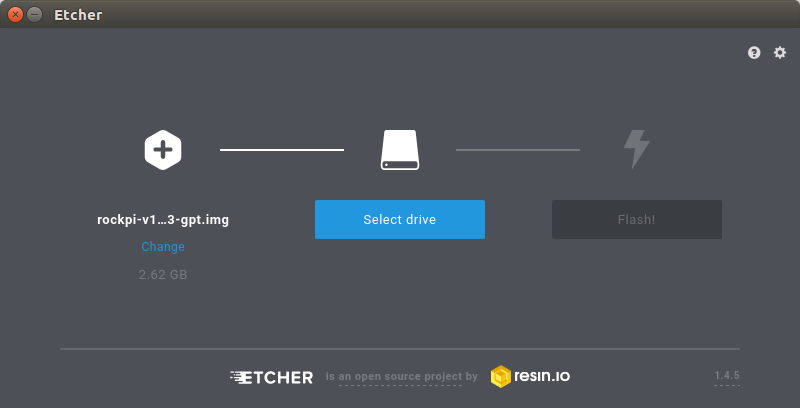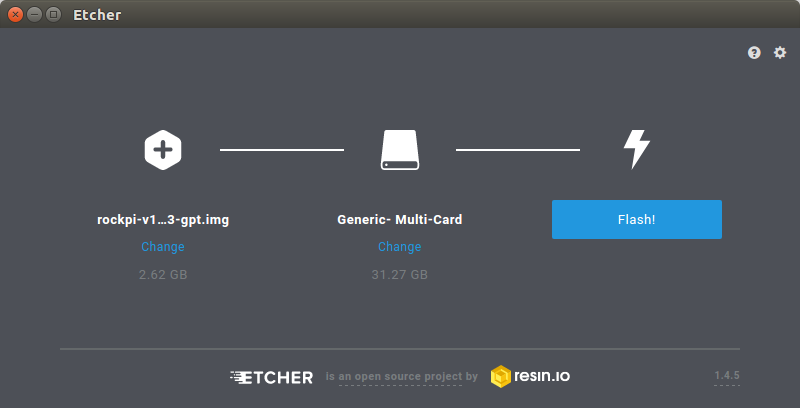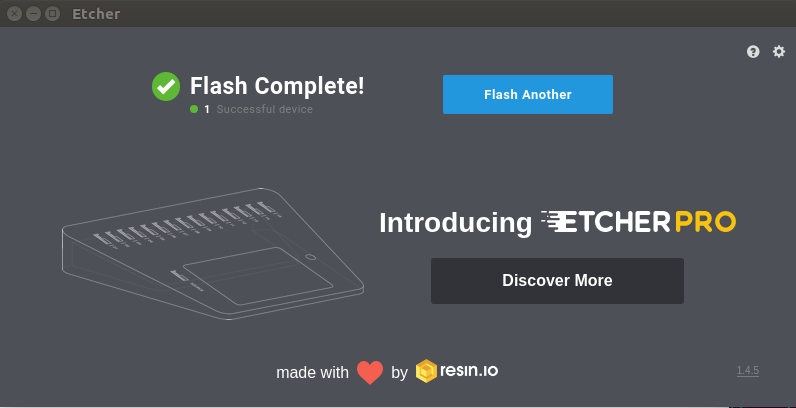Zero/getting started
This guide is designed for Radxa Zero enthusiast. The purpose is to learn about the Radxa Zero SBC as well as how to prepare and set up for basic use. The Radxa Zero comes in different ram models. When you get a board, you need to know what zero model it is and which hardware version it is. The information is printed in the top side of the board package. We will cover the board information as much as possible in this start page.
What you need
Necessary
- Radxa Zero main board
- Any ram size model of Zero
- One of the Storage media below:
- If your Zero model is 512MB ram or 1GB ram, you need a μSD card, larger than 8GB, for desktop usage, we recommend 16G or 32G uSD card.
- USB C hub
- Radxa Zero come with one USB 3.0 C port, which can be expanded as multiple USB 3.0 A ports as well as Ethernet. If the hub supports USB C to display(HDMI or DP/VGA), the display port will not work on the Zero.
- USB Keyboard and Mouse
- With USB C hub, Radxa Zero can be equipped with a full sized keyboard and mouse.
- Monitor and HDMI Cable
- Radxa Zero is equipped with a micro sized HDMI connector. A Micro HDMI(type D) to HDMI(type A) cable is required. HDMI capable monitor/TV is recommended.
- HDMI EDID display data is used to determine the best display resolution. On monitors and TVs that support 1080p (or 4K) this resolution will be selected. If 1080p is not supported the next available resolution reported by EDID will be used. This selected mode will work with MOST but not all monitors/TVs.
- USB Male A to C or USB C to C cable
- The USB cable is used for powering the Radxa Zero as well as data transmission from your host PC to the Zero. Depends on the USB port on host PC, you may need USB A to C(host PC is USB A) or USB C to C(host PC is USB C) cable.
- μSD Card Reader(Necessary for 512MB/1GB ram model)
- For flashing the image into μSD Card.
Optional
- Power supply
- Yes, power supply is optional for the Zero since its low power consumption and can be powered from host PC USB. If you plan to use Zero independent from PC, you can use power supply with 5V/1A. If you power the Zero from host PC USB ports, may sure plugging it to the USB 3.0 port which can provide up to 900mA power.
- USB to TTL serial cable
- This is needed for serial console.
Close look of Radxa Zero
- Zero front view
- Zero front with an angle view
- Zero back view
Features
| Model | Radxa Zero 512MB/1GB | Radxa Zero 2GB/4GB | |
|---|---|---|---|
| Processor | 64bits quad core processor Amlogic S905Y2 Quad Cortex-A53, frequency 1.8GHz ARM G31 MP2 GPU supports OpenGL ES 3.2 Vulkan 1.0 and OpenCL 2.0, | ||
| Memory | LPDDR4 32bit LPDDR4@3200Mb/s | ||
| Storage | μSD card (μSD slot supports up to 128 GB μSD card) | on board 8GB eMMC(2GB ram model) or 16GB/32GB/64GB/128GB eMMC(4GB ram model) μSD card (μSD slot supports up to 128 GB μSD card) | |
| Display | HDMI 2.0 up to 4k@60 | ||
| Camera | None | ||
| Wireless | 802.11 a/b/g/n wifi(WiFi 4) Bluetooth 4.0 with on board antenna(optional external antenna) |
802.11 ac wifi(WiFi 5) Bluetooth 5.0 with on board antenna(optional external antenna) | |
| USB | USB 2.0 OTG X1, shared with USB power USB 3.0 HOST X1 in USB C type | ||
| IO | 40-pin expansion header 2 x UART 2 x SPI bus 3 x I2C bus 1 x PCM/I2S 1 x SPDIF 2 x PWM 1 x ADC 6 x GPIO 2 x 5V DC power in 2 x 3.3V DC power in | ||
| Others | Button Button for force USB boot or firmware upgrading | ||
| Power | USB C, 5V/1A | ||
| Size | 85mm x 54mm | ||
Contents
Starting the board for the first time
Radxa Zero can boot from eMMC or μSD Card. Now, you are presented with two options when installing your new operating system onto your zero.
Prepare
- OS boot from eMMC(2GB or 4GB ram model only)
Radxa Zero is preloaded Android in the eMMC, it works out of box. If you want to install other OS to eMMC. You need to Erase eMMC first, then install to eMMC. Follow the erase eMMC guide to erase eMMC and install to eMMC guide to install the OS to eMMC.
- OS boot from μSD Card
Insert the μSD Card into μSD Card Reader, which connects to host computer. The picture below shows.
(add μSD Card and μSD Card Reader picture)
Write Image
- Download the flash tool, etcher, from Downloads. Choose the right version for your host operation system. Here we operate on host Ubuntu 16.04.
- After unpacking the package, we run the tool by executing the command
$ ./etcher-etcher-electron-1.4.5-x86_64.AppImage
If you get an error message: "No polkit authentication agent found" you can try and start it with sudo, but do know that this is running the tool as root.
- In the etcher window, click Select image.
- In the etcher window, click Select Drive.
- In the etcher window, click Flash.
- In the etcher window, once it shows us Flash Complete! It is done and can be put into the RockPi.
Boot
- If boot with uSD card, plug in the uSD card to the zero
- if boot from eMMC, eject the zero from host PC and unplug the USB C cable from host PC
- Connect the zero to your display with the HDMI cable. Ensure that the source for the display is switched to the HDMI port you are using.
- Connect the USB keyboard and mouse.
- Connect the power supply to the zero. The board will begin to boot immediately. (You might not see the boot sequence, on Ubuntu Server you will see the login prompt)
Wish you good luck!
Troubleshooting
- Refer Troubleshooting page
- Post your issue on the forum: https://forum.radxa.com/c/zero

